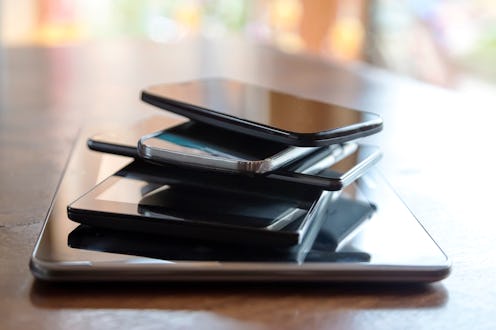Tech
How To Donate Your Old Devices To Those In Need
Have an old tablet or laptop lying around? Here's how to donate it for those in need.

During the pandemic, our need to stay connected virtually has become more important than ever. But not everyone has access to a functioning device that allows them to stay in touch. As a result, many organisations across the UK are pulling out all the stops to help connect vulnerable communities to the help and support they need. If you're interested in their efforts, here's how you can donate your own device to help community reuse projects in the UK.
By now you will have likely be aware of the "digital divide" – the divide between those who have easy access to computers and the internet and those who do not – which has been worsened by the pandemic forcing people to work, and learn, from home.
Among those most affected by a device shortage are children who are trying to continue with their education from home following as lockdowns in the UK (and beyond) continue. An Ofcom report revealed about 9% of children in the UK – that's between 1.1 million and 1.8 million young people – do not have access to a laptop, desktop, or tablet at home. And more than 880,000 of them live in a household with only a mobile internet connection.
However, it's not just children who are affected. Older generations and those shielding due to being medically vulnerable are at risk of being cut off from the rest of their world during lockdown.
A number of organisations are accepting donations of devices across the UK, which means you can help out by donating unused laptops, tablets, and smartphones to those in need. Here’s how you can help where you are.
What is the government doing to help the digital divide?
The government has pledged to provide over one million laptops and tablets to those without adequate homeschooling provision and says that those who require more should contact the Department for Education (DfE). So far, 139,805 laptops and tablets delivered or dispatched to schools and colleges between January 4 and 11, and a total of 702,226 as of January 11 since the summer 2020 term by the DfE.
Where can I donate devices during the pandemic?
The Restart Project has an extensive list of local organisations accepting donations and redistributing them. The local aspect, it says, is crucial as “it ensures that laptops will be delivered fit-for-purpose, and that potential follow-up help exists nearby.”
Elsewhere, Vodafone is accepting smartphone and tablet donations for its Great British Tech Appeal, where you can send your device in a prepaid envelope from all over the UK.
Other nationwide schemes include:
- The Turing Trust collect nationwide
- TechInclusionUk collect nationwide
- DonateDigital accept donations by post or will collect
Even individual people are setting up schemes where there has been a gap in coverage. Derryware Donations is an organisation working with Neverware in Londonderry, Northern Ireland set up by IT teacher Eoghan Barr to implement the Google Chromebook OS onto older laptops.
How to donate a device
Find a donation site or organisation that you are happy with and research how to donate your device in the most COVID-safe way.
Before you part ways with your device, you should erase it of any data if you can, in particular personal data, and make sure that anything that you do want to keep has been backed up to another device or storage, as it is often almost impossible to return the device once it has been donated. Some organisations can remove the data for you. Double-check their processes, and make sure you’re happy with how they remove the data before you donate. If you need help removing data from your smartphone, laptop or tablet, the National Cyber Security Centre has a useful guide on how to erase personal data from your device.
What else can I do to help the digital divide?
If you don’t have a device to donate, don’t worry. You can still help by donating to charities that are working to provide them to those in need. To get started, check out:
This article was originally published on